SEO Glossary: A Comprehensive List of SEO Terms with Definitions
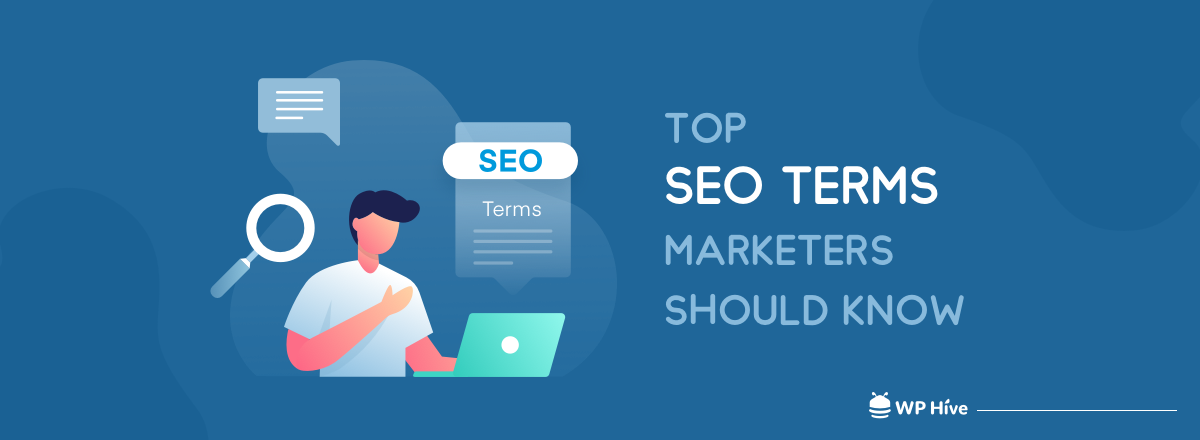
Search Engine Optimization (SEO) is one of the most crucial aspects of marketing in the current era of digitalization. It is the practice of making a website valuable to search engines, thus attracting large quantities of quality organic visitors.
Right now, there are more than 1.75 billion websites online
internetlivestats
And there’s a good chance that your website will never attract visitors unless you apply proper SEO techniques.
However, SEO is a complex set of work and its terminologies are even more complex. If you are a new online marketer, learning the SEO terms should be your first priority before you jump right in to do SEO.
This SEO Glossary is a compiled list of the terms that you’ll come across while doing SEO. We hope it will help make you ready for the real battle, to rank your website on top of the search engines.
Essential SEO Terms You Need To Know
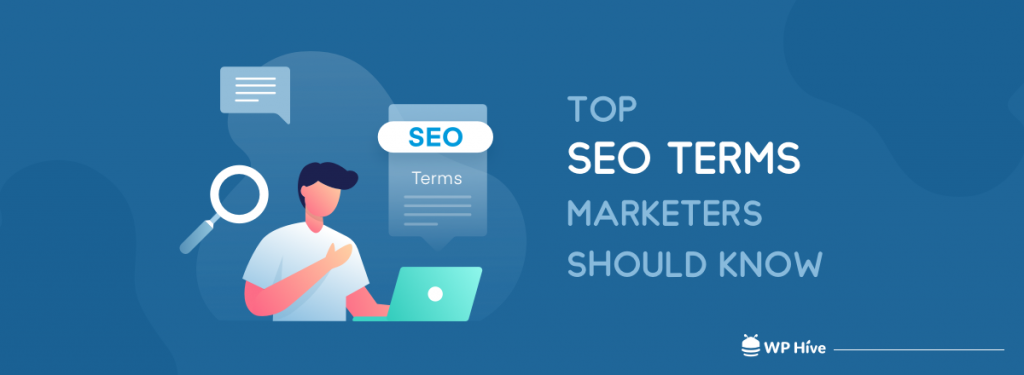
Before we immerse you with the huge list, first let’s check out some of the most used terminologies that you will see all the time while doing SEO.
Algorithm
Algorithms are the computer programs behind the search engines to determine which websites to display for a user query. Algorithms take several factors into account and retrieve data and websites that are relevant to the search query.
Alt-Text
Alt Text is a word or phrase that we can set to display in case an image or graphic is not visible to a user. It carries a great deal of importance as it is also used by the search engines to understand the contents of an image.
Also, in case of any missing image, users can easily understand what the image was all about by reading the alt-text.
Backlink
Backlinks are the links to your website from an external website. Having a good number of backlinks from quality sites with relevant anchor-text is one of the best ways to rank higher in search engines.
You can achieve backlinks by guest posting on high ranked websites.
Conversion
Conversion is being able to encourage visitors to do a specific action when they visit your website. This includes signing up, downloading a file, or buying a product, etc. It increases user experience and users don’t feel confused.
It is a good practice to use CTA buttons to enable these actions.
Crawling
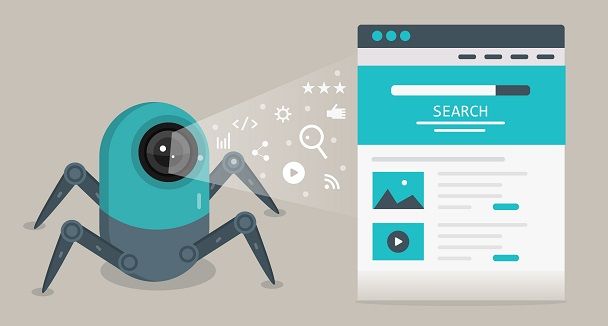
Crawling is a process done by search engines using bots to crawl or move through a website. It not only analyzes a website but also follows every external or internal link to and from the website. Search Engines do crawling to index pages from a particular website.
Domain
A domain is a unique address of a website. Such as, you can reach our website by typing www.wphive.com. It’s a good thing to register a domain name for your website for a longer period, as search engines see that a sign of stability.
You already know this. Though there are a couple more search engines like Bing and Yahoo, yet all our SEO efforts are mainly for this specific website.
Google is the single biggest search engine in the world
Netmarketshare
Homepage
The homepage is the main or root page of a website. When a visitor type in a website URL, this is the first page they will be welcomed with. It is also the most visited page of a website.
So, you your homepage needs to be attractive while guiding the user to the point he/she wants to go.
Index
The index contains all the webpages that a search engine decides to store through the crawling process. If your website or a specific page of your website is not on s search engines index, it will not be displayed on search results.
Keyword
Keywords are the words or phrases that users type into a search engine to find a relevant webpage. One of the core work of SEO marketers is to find keywords that people are searching for and match them with relevant content on their website.
Meta Tags
Meta tags contain meta keywords and meta description. They are written on the head section of the HTML structure of a webpage. It tells the search engine what that webpage is all about.
Also, users can easily get an idea about your content by reading all the meta tags.
Organic Search
An organic search is done when a user searches for a term on a search engine and visits an unpaid result.
Page Rank
PageRank or PR is a value assigned by google algorithm to measure the importance of a page. The higher the value, the higher the website will rank on google search.
Traffic
Traffic is the number of visitors coming to a website within a specific period. Traffic can be of various types,
- Organic traffic
- Paid traffic
- Referral traffic
- Social media traffic
XML Sitemap
XML Sitemap is a virtual map containing the links of all the pages of a website. It helps search engines crawl through your website and index all the pages.
SEO Glossary of Terms: A Guide for Beginners
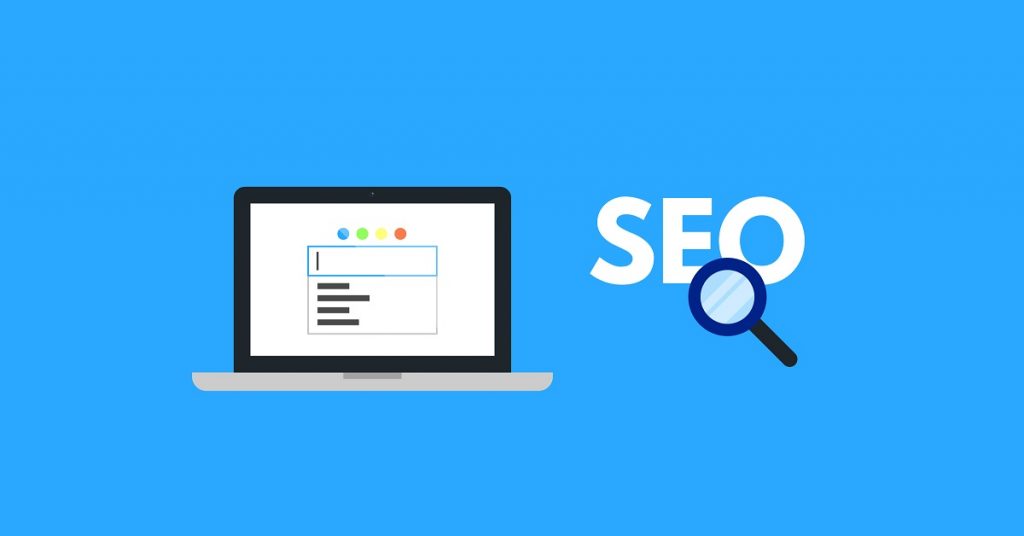
Finally, the main attraction of your article today. Here’s the complete glossary of terms. For your convenience, we have organized the terms in such a way so that if you are searching for a specific term, just click on the first letter from the table of content below to find it quick and easy!
Quick Navigation
| # | A | B | C | D | E | F | G | H | I | J | K | L | M | N | O | P | R | S | U | W | Y |
#
301 Redirection
301 redirect is a systematic way to automatically redirect users from one page to another page with a different URL. This is usually done if another page with updated content on the same topic exists on the same website.

This also ensures that people who have linked to or bookmarked the old address will automatically get to the new one, and search engines can update their index.
302 Redirection
302 redirection is the same as 301 Redirection, apart from the fact that the redirection is temporary. It is used when an original page is being updated and will be back after the update is done
A
Adwords
Google Adwords is the “Pay Per Click” program by Google to attract visitors to a website. It is an advertising system in which advertisers bid on certain keywords in order for their clickable ads to appear in Google’s search results.
That’s how Google makes money from search.
Anchor Text
Anchor text is a text that works as a link when the actual link is hidden inside it. This is usually the blue text we come across on most websites. Inbound links with relevant anchor text are good for a website’s SEO.

Authority Site
Authority Sites are websites that people trust. When a site has inbound links from many high ranked websites, it is considered as an authority site to search engines.
B
B2B & B2C
B2C and B2B are two forms of commercial transactions. B2C stands for business-to-consumer, which is a process for selling products directly to consumers. B2B stands for business-to-business, which is a process for selling products or services to other businesses.
Baidu
Baidu is the most popular and regularly visited search engine in China. 90% of online search queries done in China are done through Baidu.
Bing
Bing is the second most visited search engine worldwide. It is owned and operated by Microsoft.
Black Hat
Unethical or manipulative way to rank higher on search engines. These ways are against search engine guidelines and websites can get banned for these types of malpractice.
Blog
A blog is a regular publication of new content on different topics. Each publication is posted on a new page. Writing blogs on a regular basis can be a good SEO practice for your website.
Bounce Rate
Bounce Rate is the percentage of users that visit your website and leave without any other interaction or entering any more pages. The lower the bounce rate, the better is for you. Because that means people are interested in your content.
Breadcrumb
A navigational element that helps users find out where they are on a website and how to get back to the root. Breadcrumbs are typically placed in the horizontal form under the masthead or navigation of a website.

C
Cache
The technology of temporarily storing web content to load it faster. It is a widely used method for storing information so that it can be later accessed much more quickly.
Canonical URL
The canonical URL defines the best address to find information about a specific topic on a website. It is used in case there is more than one address where the same content can be found.
CMS
CMS or Content Management System is a kind of web-platform that lets a user create a website without any coding skills. WordPress is one of the best examples of CMS.
Competition
Competition is a metric for a keyword that several webpages are trying to rank for. The higher the number, the higher the competition.
CSS
CSS stands for Cascading Style Sheets. This is a language that defines how the HTML of a website should look.
D
Dead-End Page
A webpage that has no further links to any other page, so the visitor or search engine bot has no other place to move forward.
Directory
A directory is a categorized list of websites. Unlike search engines, the list of websites in a directory is manually curated and categorized.
Do-Follow
Do-follow is HTML links that don’t have a “no-follow” attribute. Search Engine bots can easily move around with do-follow links, which gives them an SEO value.
E
E-Commerce
Sale of products through online stores. E-Commerce is growing very fast. It’s the best and easiest way to sell a product nowadays. You can create an E-Commerce website easily using WordPress.

F
Fold (The Fold)
Fold refers to a point in a webpage where it is cut off by the bottom of a monitor or browser window. It is the only visible part of a webpage unless the user wants to scroll down.

G
Gateway Page
A gateway page is a page that is crafted to attract visitors from a search engine, and then encourage them with CTAs.
Google Analytics
Google Analytics is a free program from Google that gives detailed data on the traffic of a website. This data includes geographic location, device, time spent, bounce rate, etc.
Googlebot
Googlebot is the crawler program used by Google to find webpages to index. It collects documents from the web to build a searchable index for the Google Search engine.
H
Heading
Headings are the title of different sections of a website. Headings are created using h1-h6 tags. They are significantly bolder than the regular page of a website.
HTML
HTML stands for HyperText Markup Language. It creates the backbone of a website. HTML is also the code that search engines crawler analyze to get an idea of your website.
HTTP/HTTPS
HTTP or The Hypertext Transfer Protocol is the way data transfers between the website and the visitor. HTTPS is the secured version of HTTP, which uses Secure Socket Layer (SSL) to ensure data security.
I
Impression
An impression is the number of times a webpage has been viewed over a certain period.When your ad loads and displays in front of a user, that is one impression.
Inbound Link
An inbound link is a link to your website from another site. When someone else uses your website link on their website, it usually enhances your site authority.
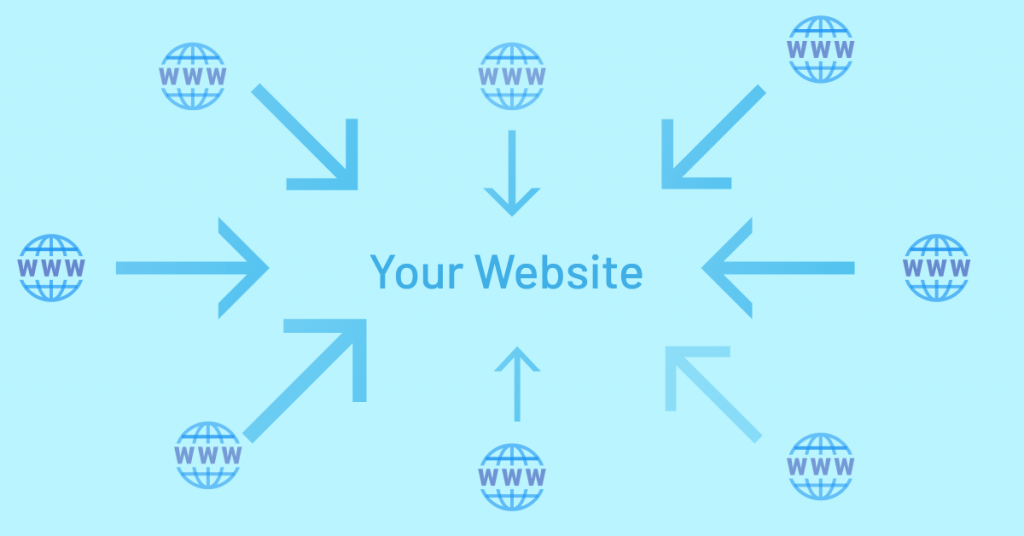
It is better to have a good number of inbound links to your website from other valued websites, as search engines then think of your site as a resourceful one.
Internal Link
A link from a page, to another page of the same website. An internal link can be used to guide the user through your website and help them with more relevant content.
J
JavaScript
JavaScript is a scripting language that is used to create special dynamic features for a website.
K
Keyword Cannibalization
Keyword cannibalization happens when two or more pages from the same website focus on the same keyword. This results in low PageRank for both the page, as search engines fail to understand which page is more relevant for that keyword.
Keyword Density
Keyword density is the number of times a keyword is used on a single webpage. The ideal percentage to use a keyword on a webpage for better SEO is not yet known.
2% keyword density is a good practice
L
Landing Page
Landing pages are the pages that a user will land once they click on the link. These pages are often created to generate leads.
Link Building
Link building is the process of getting inbound links from well-ranked, authority sites. More links from trusted sites are a huge boost for websites SEO.
Long-Tail Keywords
Long-Tail keywords are phrases that contain three or more words. Long-tail keywords usually target specific customers and their search terms. The conversion rate of long-tail keywords is usually higher than in regular keywords.
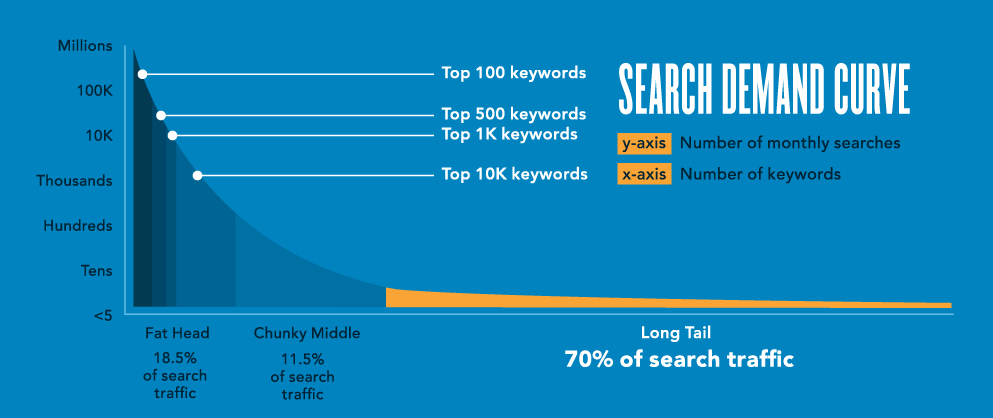
M
Metric
Metric is the measurement of the performance of a website. This include website traffic, traffic source, bounce rate, top pages, conversion rate, customer’s lifetime value, etc.
Monetize
Monetizing is a method of earning money from a website by placing an ad. Basically you will driving your traffic to another website through a link beneath the add in exchange of money.
N
Negative SEO
Negative SEO is malpractice to deliberately harm the ranking of a website. This kind of attack can take a number of different forms: Hacking your website. Building hundreds or thousands of spammy links to your website.
No-Follow
No-Follow is an HTML attribute that tells a search engine to not follow a specific outbound link.
O
Off-Page SEO
Off-page SEO refers to SEO activity that helps rank a website higher but is not done on the website itself.
On-Page SEO
On-page SEO is the opposite of off-page SEO. Key examples of on-page SEO are the usage of keywords, structuring HTML to help a search engine understand what your website is about, etc.
Outbound Link
Outbound link refers to a website placing a link to another website. Also called external links, it direct visitors from pages on your website to other sites on the Internet. Unlike inbound links, which send visitors to other pages on your website
P
Page Speed
Page Speed is the amount of time needed to load a webpage. Page speed affects a website’s rank on search engines. Here’s how you can improve your page speed.
Page Title
A page title is the name of a webpage. Page titles are the titles search engines use to display a website on search pages.
Paid Search Result
Paid search results are the opposite of the organic search Result. Paid search results are displayed above the organic search results on search engine
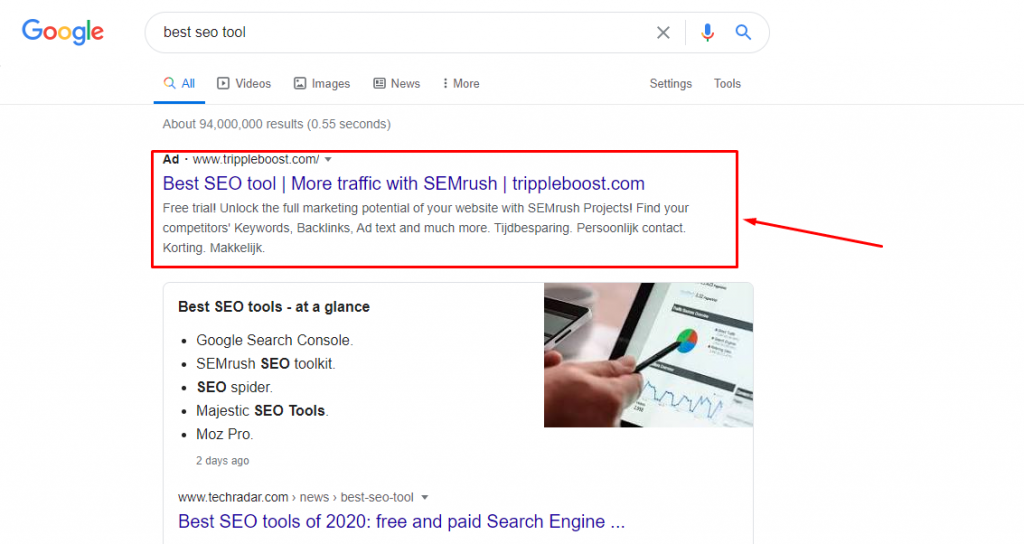
Panda
Panda is a series of updates released by Google to prevent bad practice to rank a website higher.
R
Rank
Rank is the position of a website in an organic search. Google measures various factors for a website and then decides in which place to rank the website. If it’s good enough, you can get a place in the first page.
Ranking Factors
Ranking factors are the factors that a search engine takes into account to rank a website in a search result.
Robots.txt
Robots.txt is a file that is used to tell a search engine which part of the website should be ignored. It is important to have Robots.txt file on your website so that search engines can index only the pages that you want.
S
Search Volume
Search volume is the number of times a keyword is searched during a specific period.
SEM
SEM stands for search engine marketing. It describes the process of increasing website traffic with both organic and paid efforts.
SEO
SEO or, search engine optimization is the process of optimizing a website for search engines, thus getting organic visitors. This is a combined effort that is done by choosing relevant keywords, link building, ensuring better user experience, and offer quality content.

SERP
SERP stands for the search engine result page. This is the page a search engine displays after a user types in a query. This page contains all the webpage that matches the users’ search term.
Spider
Spiders are the same as crawlers. They are used to crawl websites and determine whether the page should be indexed.
U
UGC
UGC stands for user-generated content, the content that is posted by a user or customer of the website. This includes a photo, video, blog, or even a comment from a user.
URL
URL or uniform resource locator is the address of a webpage. Every page of a website has a different URL. An URL usually consists of a domain name and a custom page name. Here’s an example to help you understand.

W
White Hat SEO
SEO practices that maintain all the guidelines by search engines are called by white hat SEO.
WordPress
WordPress is the leading Content Management System in the world. According to the stats from WhoIsHostingThis, Over 42% of all the websites in the world are powered by WordPress.

Y
Yahoo
Yahoo is the third most popular search engine in the world, accumulating almost 2% of the global search engine market share.
Yandex
Yandex holds 5th position worldwide on the market share of search engines. It is the 4th most popular website in Russia.
Also Read: eCommerce Glossary: 80+ Terms You Should Know
Time to Be a Great Marketer
A lot of people face difficulties during their earliest days of being a Marketer on digital platforms. If you are using a Wordpress site, this is the best SEO guide for WordPress to get you started for your next step.
In this glossary, we wanted to cover all the common SEO terms. However, if you are facing difficulties with a term that we did not cover here, do comment below and we will definitely help you out.
Disclosure: WP Hive earns a commission when you buy through partner links. It does not influence the unbiased opinions of our writers. Learn more →
https://wphive.com/seo/seo-glossary-a-list-of-seo-terms-with-definitions/
Faisal Sarker
Faisal is a tech blogger who excels at WordPress Content Writing. Apart from sharing useful info pieces that help people around the world, he also likes to travel and read books of all genres in his leisure time.




2 replies on “SEO Glossary: A Comprehensive List of SEO Terms with Definitions”
Woah! I’m really digging the template/theme of this website.
It’s simple, yet effective. A lot of times it’s difficult to
get that “perfect balance” between superb usability and
appearance. I must say that you’ve done a amazing job with this.
In addition, the blog loads very quick for me on Safari.
Superb Blog!
Thanks for your kind appreciation.